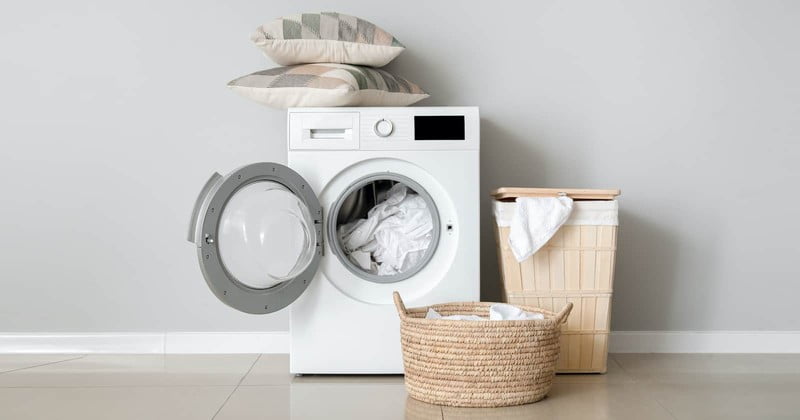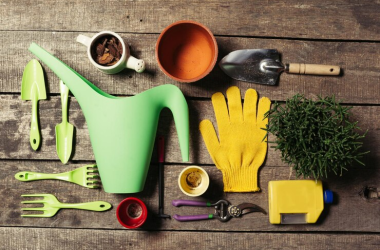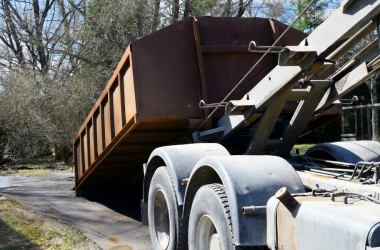Doing laundry is a regular, often frustrating, but essential task everyone has to do. The only thing more stressful than actually washing your clothes is deciding which new washer to buy. There are dozens, perhaps hundreds of features, brands, designs, styles and price ranges to consider.
Before you decide to buy, you’ll have to be familiar with a number of things, such as what’s the difference between front-load and top-load washers. What is the width of the washing machine? Do you require a smart washing machine? Are they worth the cost? We’re here to answer all these questions and more.
We know that there’s plenty to consider before you’re ready to buy a new washing machine. That is why you need this washing machine buying guide that provides all the information you need to know when buying a new washing machine. It will assist you in determining the best type of washer and also which additional features are worth it.
Types and Styles of Washers
What is the difference between front-loader and top-loader washing machines? Would a compact or stackable dryer and washer better meet your requirements? With all the different kinds of dryers and washers available today, it’s difficult even just to decide where to start!
It’s fine. We know the anxiety that can come with it. We’re here to assist. A washing machine comparison guide like this is all you require to figure out which type and washing machine size is the best for your needs.
Front Load Washers
Deciding between a front load and a top load washer does not have to be difficult. After all, you’ll want to know what the most efficient washing machine on the market is, regardless of the style you choose to purchase. Also, you should consider the advantages of front-load washers over top-load washers. For instance, they
- Use less water
- Are more energy efficient
- Spin faster, so clothes dry faster
- Gentle on clothes
- Can be stackable, which saves space
On the other hand, due to the door’s vertical placement, front-load washers need an airtight seal to prevent leakage. If regular maintenance and cleaning aren’t carried out, mildew, mould and bacterial growth can start to develop around the rubber seal. You will also have to bend more to unload and load your front-loading washing machine.
Top Load Washers
The benefits of top-load washers include less bending or kneeling to load and unload, larger capacity, and traditional design. They’re also cheaper than front loaders, on average. Top-load washing machines aren’t as prone to mould growth because they don’t need airtight lids.
However, top-load clothes washers usually use agitators for cleaning clothes which can stress some fabrics. Top loaders might also be more difficult for shorter people to load and unload compared to front loaders.
Compact Washers
Compact clothes washers can be an excellent option if you want to make the most of your space. They work well in condos and apartments and are sometimes called mini-washing machines. Compact washers are approximately 34 inches tall, 24 inches deep, and about 24 inches wide. They can be placed in tight spots and still get the job done.
These compact and energy-efficient machines are ideal for lighter loads of laundry, which is why they are perfect for parents of newborns, college students, and single individuals. It is important to note that they might not be adequate for some laundry needs.
How to Measure a Washing Machine?
What is the width of a washing machine? The width and height of the washer (and dryer) can vary slightly based on the make and model. There’s also a difference in size that you’ve probably noticed between compact and. full-size machines. This is why it’s crucial to measure the opening you intend to place your new washer in before purchasing. Here are some smart tips for measuring:
Be sure to measure and record the width, height and depth of your opening. These three dimensions are important. Include an extra foot of height if you’re thinking about a top-loading washing machine. If your vertical space is limited, consider looking for a front-loading compact washer instead.
Use the same measurement instrument to measure the width, height and depth of the washer you’re considering. It’s best to leave some extra space around the appliance rather than having it packed in too tightly. This allows for easier cleaning and more efficient, cooler operation.
The standard dimensions of a washer and dryer are:
- Width – 27″ (you’ll need to plan for at least a 54″ space if you’re doing a washer-dryer side-by-side set-up)
- Height – 38 – 43″
- Depth – 28 – 34″
What to consider before purchasing a New Washing Machine?
Now you know the various types of washers available, how do you know which is the best for you? There are many factors to consider before you can decide. For instance, you might need to consider the following:
– Space
Consider how much space you’re dealing with first. Remember that you’ll need to fully open the doors every time. Will the washer fit through your doorway? Do stackable washers work better? Before buying, it is essential to accurately measure your space and consider the typical washer-dryer size and width.
– Capacity
Do you do a lot of laundry? Do you need to wash a lot of very large, bulky items? Do you have a large family? Washing machine tub capacities vary between 1 to 6 cubic feet. To determine the appropriate tub capacity you need, consider that a 4.5-cubic-foot washer is designed to handle 25 to 30 standard bath towels in a single load.
– Laundry Habits
Do you run small, regular loads of laundry? Do you keep clothes in your washing machine for long periods of time? Do you have plenty of delicate clothes that might be damaged by an agitator? Considering your own laundry habits can help you decide which modern features will best serve you.
Frequently Asked Questions (FAQs)
How do I know if my washing machine is too full?
What is considered a load of laundry? This depends on your washer’s capacity ratings. It’s always a good idea to use your “palm technique” to figure out how much you can load into your machine. Just make sure that there is enough space left in the tub after loading your clothes to place your hand palm down inside the tub on top of the clothing. In other words, leave 2 or 3 inches from the top of the tub.
How do you prevent overloading your washing machine?
Place every item to be washed in the tub loosely. Spread, or even “sprinkle,” each item out and don’t pack the clothes in. Leave room for the clothes to move around and wash – they shouldn’t be packed together, which prevents the clothes from really being clean.
Do I need to clean my machine?
Check your manufacturer’s manual for the recommended method (as well as the frequency) to wash your washing machine. Most people use three to four cups of white vinegar in a full tub of water with no clothes or detergent. Let the machine cycle as usual.
What is the average washing machine cycle time?
A typical wash cycle lasts between 50 minutes and an hour. Of course, the load size, cycle choice and other factors will affect it. Many machines have a quick-wash option for small, quick loads that require quick completion.
How long should a washing machine last?
An average washer can last about 10 years, depending on usage and care.






















